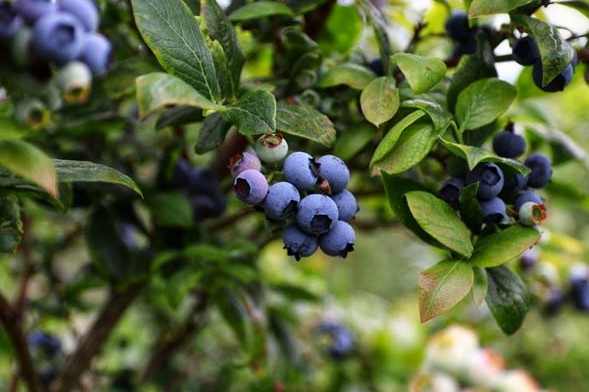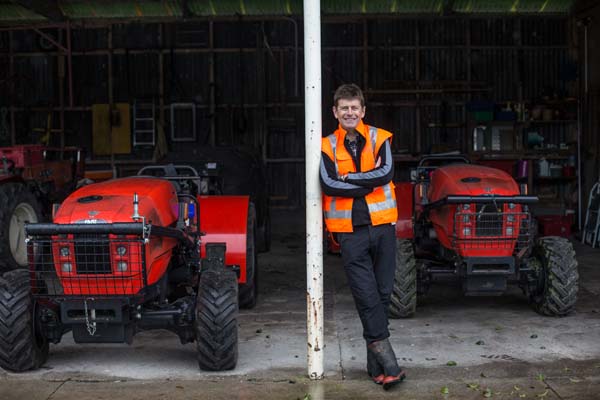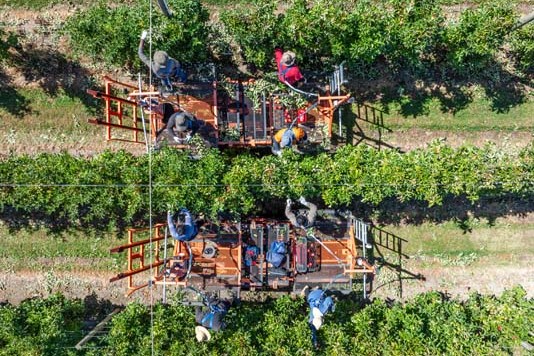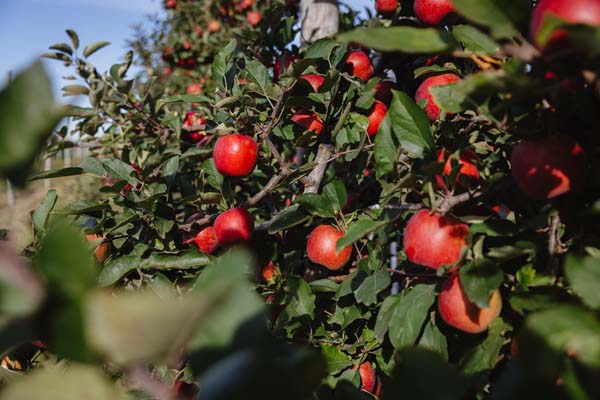Varied milking frequencies has been a successful recipe for a Maruia dairy farming couple. Anne Hardie reports.
In the middle of a lease-to-buy agreement to buy their first farm and juggling work with family, Brian and Hannah Dineen have tried a range of milking frequencies to survive financially, physically and emotionally.
It’s their third season on the Maruia farm in the Top of the South and they’ve milked twice a day (TAD), once a day (OAD), 3in2 and even 10in7 for a short stint. After much experimentation and learning about their new farm, they have settled on milking TAD for the first two months of the season and then 3in2 for the remainder which so far seems to be resulting in more milk from fewer cows.
Brian acknowledges they don’t always follow the conventional route, with some trials working and others not so successful. He puts it down to the fact neither of them came from a dairying background and tradition doesn’t guide them.
The Irish lad from Limerick was a professional rugby player when he first landed in New Zealand, playing five seasons for Nelson Bays and then a season with the Makos. At the end of his rugby career he trained as a helicopter pilot at a time the Government was paying for training. The unintended consequences of the Government’s input was a surplus of pilots and not enough jobs, so he took up a relief milking job on a dairy farm.
Along the way he met Hannah who grew up on a Canterbury sheep and beef farm and together they looked at a career in dairying, taking on a 2IC job on a 1000- cow farm in Canterbury. They’d only been there two years when they decided to “have a crack” at sharemilking. That was a 50:50 sharemilking contract near Tapawera in the Top of the South, in the glory days of $8.40/kg MS. Then the milk payout dropped to $3.90/kg milksolids (MS) and everything turned to custard. With the drop in payout, cow prices plummeted and so did their equity.
From sharemilking, they leased a farm for a year and then the opportunity arose to lease the 210ha effective farm on the west bank of the Maruia River. The difference was, they could lease the farm for a period of years and pay lump sums to get themselves into farm ownership. It was too good a chance to miss. They signed up and shifted their reduced herd of 350 cows into the isolated valley.
‘The owners have been really gracious to allow us to take over the farm and giving us that opportunity.’
For the first two years they simply leased the farm and last year they also began payments towards buying the farm by 2023. Buying their first farm has also been made possible by supplying Fonterra’s MyMilk on a five-year contract. That enables them to supply Fonterra without buying shares for a set period, with 5c/ kg MS deducted from their payments that goes toward the shares they will buy at the end of that contract. It also means they can try and clear more debt and put money into the farm that would not have been possible if they had to buy shares straight away. Brian says the lease-to-buy agreement has suited both themselves and the retiring farm owners Ross and Diane James, with a good symbiotic relationship established between them. They have benefited from invaluable advice about the farm and weather patterns that deliver between 1.6 and 2m of rain a year, then sweltering temperatures through summer.
“The owners have been really gracious to allow us to take over the farm and giving us that opportunity.”
It’s a challenging farm, spread over 3km of river flats merging into rock-strewn hillsides, interspersed with small gullies that channel the high rainfall from surrounding hills. About 170ha makes up the milking platform and the remainder grazes a range of beef-cross cattle bred from the herd, plus carryover cows.
The farm doesn’t have all the bells and whistles of some they have worked on in the past – apart from its rotary dairy which is a godsend for the time-challenged couple – with plenty of work to do on weeds and fences. But Brian says the bones of the farm are good and it has been developed by the previous owners over generations so that their goal to take it to the next level is potentially achievable.
That first year, to put it mildly, was a bit of a nightmare. They brought 350 cows to the farm and they were short of feed from the beginning when the last of them were being unloaded near midnight on Gypsy Day.
Despite buying in balage and milking OAD, they ended up with an “horrendous” empty rate that year of 24%. Mating was followed by one of the region’s driest summers on record – conditions that saw a massive wildfire take hold near Nelson. From 350 cows they produced 88,000kg MS that first year and kept no replacements because they were still paying debt from the $3.90/kg payout.
“The following year we were talking to the bank and they said we really needed to start producing,” Brian remembers.
Trying flexible regimes
Last season they dropped cow numbers to 280, which was partly due to fewer replacements, and started out on TAD with the intention of keeping that going as long as possible. But between two milkings every day, the workload on the farm with no staff and three kids aged seven to 11, they were struggling through spring. They switched to 3in2 until Christmas and then OAD for the remainder of the season. They had less cows, but more feed and produced 90,000kg MS or 365kg MS/cow.
This season they dropped cow numbers further to 240 which gives them a stocking rate of 1.5 cows/ha on the milking platform (1.8 overall on the farm) so they can better weather any storm thrown at them. They run a grass-only system, with balage made on the farm and only buying in molasses that is fed to the cows in the dairy along with minerals, trace elements and magnesium oxide. The molasses helps with metabolism and Brian says it seems to make everything else more palatable. After reducing to 240 cows, they have decided to lift numbers up to 280 again next season to try and strike the right balance.
“Having less stock means they’ve always got something to eat,” Hannah says. They are not keen on a repeat of their first year on the farm when feed was short.
Though a lack of money dictates a grass-only system with just molasses bought in, Brian says they wouldn’t change that even if they had money to spend.
“We used palm kernel when we were sharemilking and could see what it could do, but it’s not on our radar because we’re starting off and everything has to be simple. And if you can’t get your grass right, you know you’ve done something wrong.”
Their grass growth in the cold valley has a slow start at the beginning of the season and for that reason – and because they don’t buy in any supplement – they calve late August. This season they began with TAD milking to get the cows producing well for the rest of the season, regardless of what milking frequencies followed. By October, Brian says they had had enough and decided to drop some of the milkings.
“After a month of TAD we woke up nearly in tears and we sat down and said we’re going to burn ourselves out.”
Initially they tried 10in7 which they had played with for a couple of weeks last season. But when they tried it this season in the middle of October, Brian says the cows let them know very clearly that they didn’t like it.
“They broke out of the paddock in the middle of the night and went to the shed for their afternoon milking and waited for us. We had to milk them at one in the morning and the next day we were knackered.”
They decided their Friesian cows were struggling to adapt to it so didn’t persevere, switching instead to 3in2 which they will continue for the rest of the season, depending on the weather. If it turns dry, they will drop to OAD.
They don’t believe TAD milkings are essential nowadays to keep milk production up through the season because genetics have improved so much and they say they are achieving the same production with 3in2.
This season with 240 cows, they hope to produce between 93,000kg MS and 94,000kg MS, or 380kg MS/cow, if the weather plays ball.
“Everyone has their two cents worth on milking but we’re of the opinion we have good genetics in the cows and by having that second milking every second day, it keeps up production. We’re producing more now on 3in2 than we were on TAD, with less cows. The cows are a lot happier and so are we.”
They’ve included 3in2 milkings into their system for years – rather than the more rigid 16-hour milkings – which for them translates into milking 5am and 3pm one day, followed by 10am the next day. Then back to 5am the next morning. It gives them time to carry out more work on the farm, more time with the kids, plus more sleep with those later starts every second day.
For them, flexible milking regimes have helped them survive a pretty stressful period. They are rapt to be in the process of buying their first farm and say the lifestyle of living in a pretty spectacular setting with a close rural community is pretty special. But it ain’t easy.
“It’s not a fairy tale!” Hannah says. “It’s bloody hard. You have to be realistic; the rewards are huge and the lifestyle is amazing, but the work is really hard. But this place is good for the soul and we are very lucky.”
Brian says the support they have had, especially through that first year, has been very humbling.
“You’re dealing with people you can’t always pay on time and it is a humbling time. People were really good to us because they knew we were struggling.”
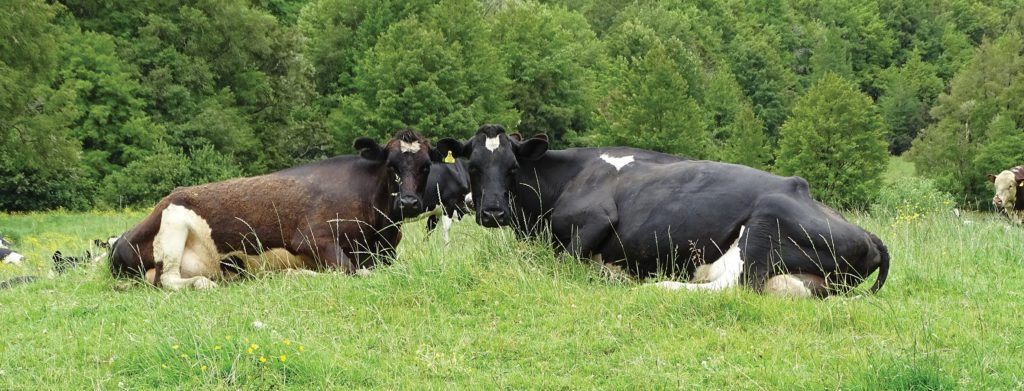
Beefing up their income
Farming beefies adds more to their workload, but also provides that extra income and selling them throughout the year is cashflow for the business.
“The beefies are vital to our survival because we need that little bit more,” Brian says.
They chose Friesian cows years ago for the ability to sell bull calves rather than put them on the bobby truck and those calves head off to buyers at four days old. After artificial insemination, Hereford and Angus bulls are run with the cows and the resulting calves are reared on the farm and sold either as stores down the track or finished prime. It makes good use of those areas on the farm that are either too distant or difficult for the dairy herd to graze. Throughout the year they run about 150 beef cattle on the farm – this year that includes 100 R1 heifers and steers – plus the 60-70 heifer calf replacements for the herd.
As R1s, those heifer replacements head to a grazier near Nelson and that’s simply because of the extra workload of keeping them at home. Eventually, they hope to become fully self contained.
The herd itself winters off the farm at a support block they lease a few kilometres away. They can walk the cows to the block which is fine while they are on the shingle no-exit road where they live. But then it’s over a bridge and on to the highway for about two kilometres, with flashing lights, kids taking a day off school to help and friends on horseback to move them along.
Because they don’t calve until the end of August, Brian says the cows get a decent break over winter to recuperate and that is playing its part to improve reproduction. Last year it lifted from that first horrendous mating to 14% not-in-calf and this year the cows have cycled well and they are hoping it will be closer to 10%.
Environmental experiments
Despite the workload and financial stresses, they have been making headway on the farm itself. The effluent field has been expanded to cover 55ha, while 50ha of new grass was sown over two years, including a mix of clover, chicory, plantain and yarrow on one of the beef and calves blocks. They’re hoping it will reseed, or may oversow other grasses into it if needed. They’ve chosen plants such as plantain with a deep root to find nutrients and grab nitrates that may have leached into the soil. Though their low stocking rate and 46kg N/ha/year puts them in a comfortable space environmentally.
“We’re trying to strike a balance and keep everyone happy including ourselves. We can still increase N under the cap and as we become more efficient with new grasses we may need to put more on.”
Despite already meeting new environmental regulations, they have taken the attitude “lets break the rules and do it better”. Such as sowing Savvy cocksfoot because it has a deep root system and loves nitrogen. They’ve planted 7ha beside the dairy where it is part of the effluent field, with clover to be added later to add bulk. Its close proximity to the dairy also means it can be grazed frequently to keep the quality up. Another benefit of the cocksfoot is that it has proven to be impervious to pests and Hannah says they “have all the pests” on the farm, including porina. Regardless of environmental and productive attributes, the cows are enjoying the ‘smorgasbord of grasses’ on offer as well and the Dineens will continue to experiment with different species. One of the next grasses they want to try is fescue as a hardy grass to get through the summer dry. Some environmental regulations will need time and money to achieve the end goal and Hannah says the Government has not allowed for that. While on the other side of the coin, Brian says he would like to hear the Government tell farmers they are doing a good job once in a while. He’s the sort of guy who will say what’s on his mind and is not adverse to bailing up politicians to tell them what he thinks of their lack of loyalty to farmers.
The Dineens are in the process of creating their farm environmental plan with Fonterra which will be a living document that gives them a base to work on. They are appreciative of the expertise available through Fonterra to guide them and say it is up to farmers to show policy makers the good environmental work they are doing.
“We don’t have much money, so have to rely on as much expertise as we can. As farmers, if we are dealing with policy makers either within Fonterra or Government, we have a role to show them what we are doing.”
Making changes around the environment and milking are all part of an experimental process to find the best solution for the farm they are wanting to make their own.
“There’s the huge enjoyment factor when you get it right,” Brian says. “Nowadays more than ever, you have to try new ideas.”
Farm facts:
Lease to buy farmers: Brian and Hannah Dineen
Owners: Ross and Diane James
Location: Maruia, south of Murchison, Top of the South
Farm: 210 effective hectares including 170ha milking platform
Herd: 240 mostly Friesian cows and climbing back to 280 cows
Production: 2019-20 season 90,000kg MS from 280 cows. This season projected 94,000kg MS from 240 cows.
Milking frequency: TAD initially and then 3in2
Milk contract: Fonterra MyMilk five-year contract
Inputs: Molasses
Calves: No bobbies – Friesian bulls sold at four days old and beef-cross farmed on
Nitrogen: 46kg N/ha/yea


